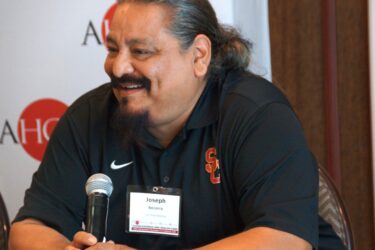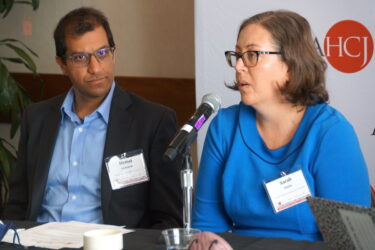
As I write this blog post, I’m scheduled to interview two individuals for a story based on a study about autism and its link to an increased risk of certain comorbidities. One person is an autistic adult, and the other is the parent of an adolescent diagnosed with an autism spectrum disorder.
At this point in my career, I have spoken with many autistic individuals and count several among my friends, but before I had known anyone on the autism spectrum, I likely would have felt a bit of initial uneasiness: Is there anything I should or shouldn’t say or do? Will they communicate in ways I am familiar with? Will they understand how I am trying to communicate?
Those are natural questions any journalist might have before interviewing someone with any disability, whether it is a physical disability, a developmental disability or a mental health condition. The National Center on Disability and Journalism is a great resource both when writing about disabilities and in preparing for interviews. The center’s tip sheet, “Tips for interviewing people with disabilities,” covers what journalists should consider before an interview, in the process of setting up the interview and during the interview.
The suggestions are aimed at people who will be conducting interviews in person, but many of the tips apply to phone interviews as well. For example, journalists should ask the interviewee beforehand whether they need any special accommodation, such as wheelchair access or a quiet environment, if meeting in person. But even for a phone interview, those with certain types of disabilities may have accommodation needs that are not immediately apparent. For example, I sometimes conduct phone interviews using a speakerphone if I don’t have a headset available. Some individuals, including those with autism, may find a speakerphone distracting or unsettling, so it is worth asking the person whether they are comfortable with a speakerphone ahead of time.
The tip sheet also advises patience: some individuals have disabilities that mean it takes them longer to process questions, formulate answers or physically respond. It obviously is not ideal to interrupt a source during most interviews, but it’s especially important if you’re interviewing someone with a disability that can interfere with interpersonal communication.
The tip sheet is not comprehensive but is a good starting place. It does not address what to do if you feel like you put your foot in your mouth (a syndrome I’m all too familiar with in any context). First, recognize that whatever you said is probably something the other person has heard before, and they likely have already developed a response. Follow their lead if/when they respond. (Obviously, specific circumstances will dictate appropriate reactions and responses.)
If you feel you need to apologize, do so merely but don’t dwell on whatever the faux pas was. If you aren’t sure how to phrase a question, tell the person you’re struggling to find the right words and that they are welcome to correct any language you use that isn’t the best terminology.
For the most part, interviewing a person with a disability isn’t much different than interviewing anyone else. If you are not sure about something follow the center’s top tip: Ask the expert – the person you are interviewing.










